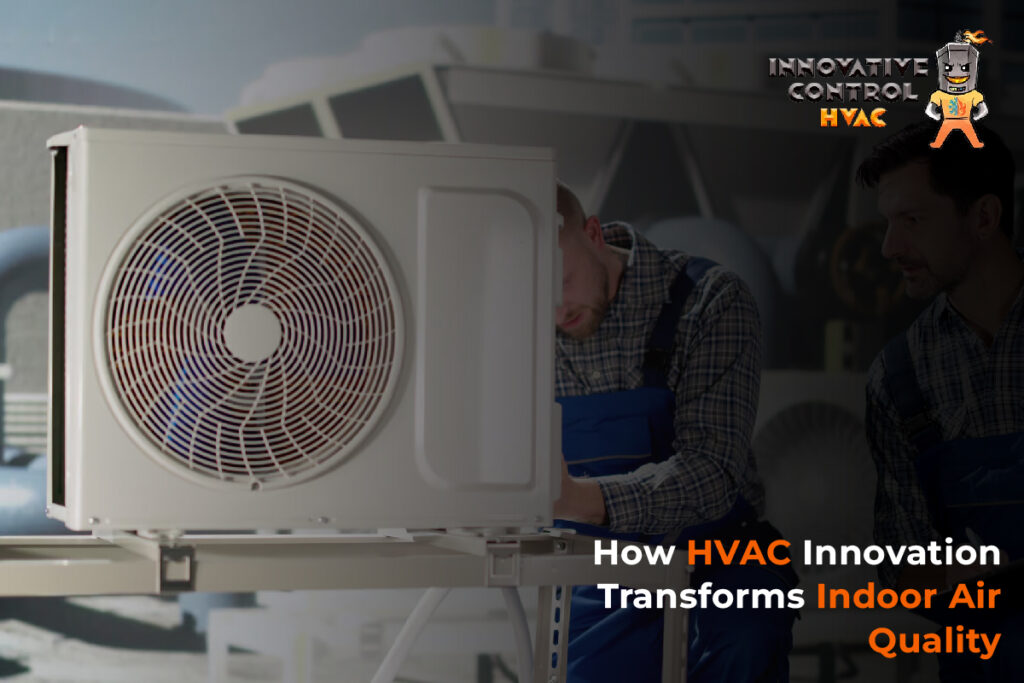
Inner air quality( IAQ) plays a pivotal part in our health and well-being, yet it’s frequently overlooked. Unexpectedly, the Environmental Protection Agency reports that indoor air can be two to five times further weakened than outdoor air. This underscores the need for effective results to ensure the air we breathe outdoors is clean and healthy. Fortunately, inventions in Heating, Ventilation, and Air Conditioning( HVAC) technology are transubstantiation in how we manage IAQ, integrating advanced features to produce safer and more comfortable living surroundings.
The Significance of Inner Air Quality
Poor IAQ can lead to a range of health issues, from minor vexations like eye and throat discomfort to severe respiratory conditions and exacerbation of allergies and asthma. Common inner adulterants include dust, earth spores, unpredictable organic composites( VOCs) from ménage products, and indeed out-of-door adulterants that find their way inside. Addressing these enterprises is essential for maintaining a healthy inner terrain.
Advanced Filtration Technologies
Ultramodern HVAC systems now leverage HVAC innovation with advanced filtration technologies to capture a wide range of airborne pollutants. High- effectiveness particulate air( HEPA) pollutants, for example, can trap particles as small as 0.3 microns, effectively reducing dust, pollen, and other allergens. Also, pollutants with advanced Minimum Efficiency Reporting Value( MERV) conditions offer enhanced filtration capabilities, landing finer particles and improving overall air quality.
UV Light Sanitation Systems
Ultraviolet( UV) light sanitization has surfaced as an important tool in enhancing IAQ. By integrating UV-C light within HVAC systems, airborne pathogens such as bacteria, contagions, and earth spores can be annulled, precluding their spread throughout inner spaces. This technology adds a redundant subcaste of protection, icing a healthier terrain for inhabitants.
Smart HVAC Systems and IoT Integration
The arrival of smart HVAC systems, powered by the Internet of Things ( IoT), has revolutionized indoor climate control. These systems use detectors and connected bias to cover IAQ in real-time, conforming settings automatically to maintain optimal conditions. For illustration, if elevated contaminant situations are detected, the system can increase ventilation or activate air sanitization features, ensuring nonstop air quality advancements.
AI-Powered Climate Control
Artificial Intelligence( AI) is enhancing HVAC systems by enabling predictive and adaptive climate control. AI algorithms dissect data from colorful detectors to anticipate changes in air quality and residency, consequently conforming HVAC operations. This visionary approach not only maintains superior IAQ but also enhances energy efficiency by optimizing system performance based on real-time requirements.
Energy-Effective Heating and Sustainable Results
Energy-efficient heating results are integral to ultramodern HVAC inventions. By using technologies similar to variable-speed compressors and advanced heat exchangers, these systems give harmonious comfort while consuming lower energy. Sustainable HVAC results not only reduce environmental impact but also contribute to better IAQ by minimizing the emissions associated with traditional heating styles.
Advanced Air Conditioning Technologies
Contemporary air exertion systems have evolved to offer further than just temperature control. Features like enhanced dehydration, better ventilation, and superior filtration work in tandem to elevate IAQ. By effectively managing moisture situations and ensuring a steady inflow of fresh air, these advanced systems produce a more comfortable and healthier inner terrain.
A Practical Way for Homeowners
To work these HVAC inventions for better IAQ, homeowners can take several practical steps
- Regular conservation ensures HVAC systems are audited and serviced regularly to maintain optimal performance and air quality.
- Filter Upgrades: Replace standard pollutants with high-impact options like HEPA or high-MERV pollutants to capture finer particles.
- UV sanctification Installation: Consider adding UV light sanctification systems to neutralize airborne pathogens effectively.
- Smart System Integration Invest in smart thermostats and IoT-enabled HVAC factors for real-time monitoring and control of IAQ.
- Energy-Effective Upgrades: Upgrade to energy-effective HVAC units to enhance performance, reduce energy consumption, and ameliorate IAQ.
By embracing these advancements and visionary measures, homeowners can significantly ameliorate their indoor air quality, leading to healthier and more comfortable living spaces.
Wrapping Up
Embracing HVAC innovations is a game-changer for improving indoor air quality. Smart HVAC systems, AI-powered climate control, and advanced filtration work together to create healthier living spaces. Energy-efficient heating and sustainable solutions not only enhance air quality but also reduce environmental impact. Regular maintenance, filter upgrades, and UV purification can further optimize your system’s performance. By investing in these modern technologies, homeowners can enjoy cleaner air, greater comfort, and long-term savings. The future of indoor air quality is here—take action today for a healthier home!
FAQs
Q1: How often should HVAC filters be replaced to maintain good indoor air quality?
It’s recommended to check HVAC filters monthly and replace them at least every 90 days. Homes with pets or allergy sufferers may require more frequent replacements to ensure optimal air quality.
Q2: Can smart HVAC systems help reduce energy bills while improving air quality?
Yes, smart HVAC systems optimize heating, cooling, and ventilation based on real-time data, enhancing energy efficiency and potentially lowering utility bills while maintaining superior air quality.
Q3: Are UV light purification systems safe for home use?
When properly installed within HVAC systems, UV light purification is safe and effective at neutralizing airborne pathogens without producing harmful byproducts.
Q4: What is the difference between HEPA and MERV filters?
HEPA filters are designed to capture at least 99.97% of particles as small as 0.3 microns. MERV ratings indicate a filter’s efficiency on a scale from 1 to 16; higher MERV ratings correspond to better filtration of smaller particles.
Q5: How does humidity control impact indoor air quality?
Proper humidity control prevents mold growth and reduces dust mites, both of which thrive in high humidity, thereby improving overall indoor air quality.
